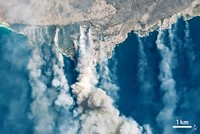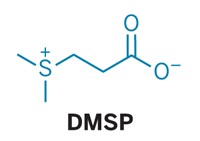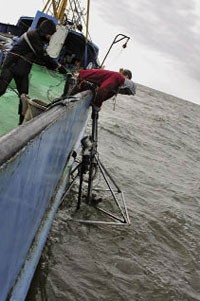Advertisement
Grab your lab coat. Let's get started
Welcome!
Welcome!
Create an account below to get 6 C&EN articles per month, receive newsletters and more - all free.
It seems this is your first time logging in online. Please enter the following information to continue.
As an ACS member you automatically get access to this site. All we need is few more details to create your reading experience.
Not you? Sign in with a different account.
Not you? Sign in with a different account.
ERROR 1
ERROR 1
ERROR 2
ERROR 2
ERROR 2
ERROR 2
ERROR 2
Password and Confirm password must match.
If you have an ACS member number, please enter it here so we can link this account to your membership. (optional)
ERROR 2
ACS values your privacy. By submitting your information, you are gaining access to C&EN and subscribing to our weekly newsletter. We use the information you provide to make your reading experience better, and we will never sell your data to third party members.
Environment
Warm Oceans Harm Phytoplankton
Satellite data link ocean temperatures, health of photosynthetic plants
by Elizabeth K. Wilson
December 12, 2006

As Earth's oceans get warmer, plant life in those waters declines. That broad pronouncement has been made possible by 10 years' worth of satellite images of Earth, showing that when ocean temperatures increase, ubiquitous photosynthetic phytoplankton that live near the ocean's surface falter.
Since its launch in 1997, NASA's Sea-Viewing Wide Field-of-View Sensor (SeaWiFS) on the OrbView-2 has mapped the color of the oceans, which tracks the presence of chlorophyll and, thus, phytoplankton. Scientists observed changes in phytoplankton levels as oceans warmed and cooled, most notably, during the 1997-99 El Niño/La Niña, a periodic fluctuation of temperatures in the eastern Pacific Ocean. During the cool phase of the event, phytoplankton increased; during the warming phase, plant production decreased. Since 1999, phytoplankton have continued to decrease as the ocean has warmed (Nature 2006, 444, 752).
The finding has major implications for how climate change could affect ocean ecosystems, according to SeaWiFS team members Michael J. Behrenfeld at Oregon State University and Gene C. Feldman at NASA's Goddard Space Flight Center. The Nature paper their team just published "does not predict what future climate is going to be," they stressed at a press conference on Dec. 6. "It demonstrates what biology would do in response to warming."
Not only are phytoplankton an enormous part of the ocean food chain, they also are a vital part of the biogeochemical carbon cycle. Each day, phytoplankton take up hundreds of millions of tons of carbon dioxide, converting it via photosynthesis to organic carbon. The plants are then eaten by zooplankton, which in turn feed millions of tons of fish. In fact, phytoplankton are responsible for half the photosynthesis on Earth, according to the researchers.
But when the atmosphere warms, so does the upper ocean. That's a problem for the phytoplankton, Behrenfeld explained, because a warm upper ocean layer is less dense, creating a more stratified system that makes it more difficult for deep, cold, nutrient-rich waters to circulate upward to feed the plants.
Satellite technology makes it possible to obtain snapshots of global changes on Earth, said Oscar Schofield, marine biology professor at Rutgers University. "If we didn't have a global view, we couldn't do this study. Ships are slow and can't be out there all the time—there's no way we could capture big trends."





Join the conversation
Contact the reporter
Submit a Letter to the Editor for publication
Engage with us on Twitter